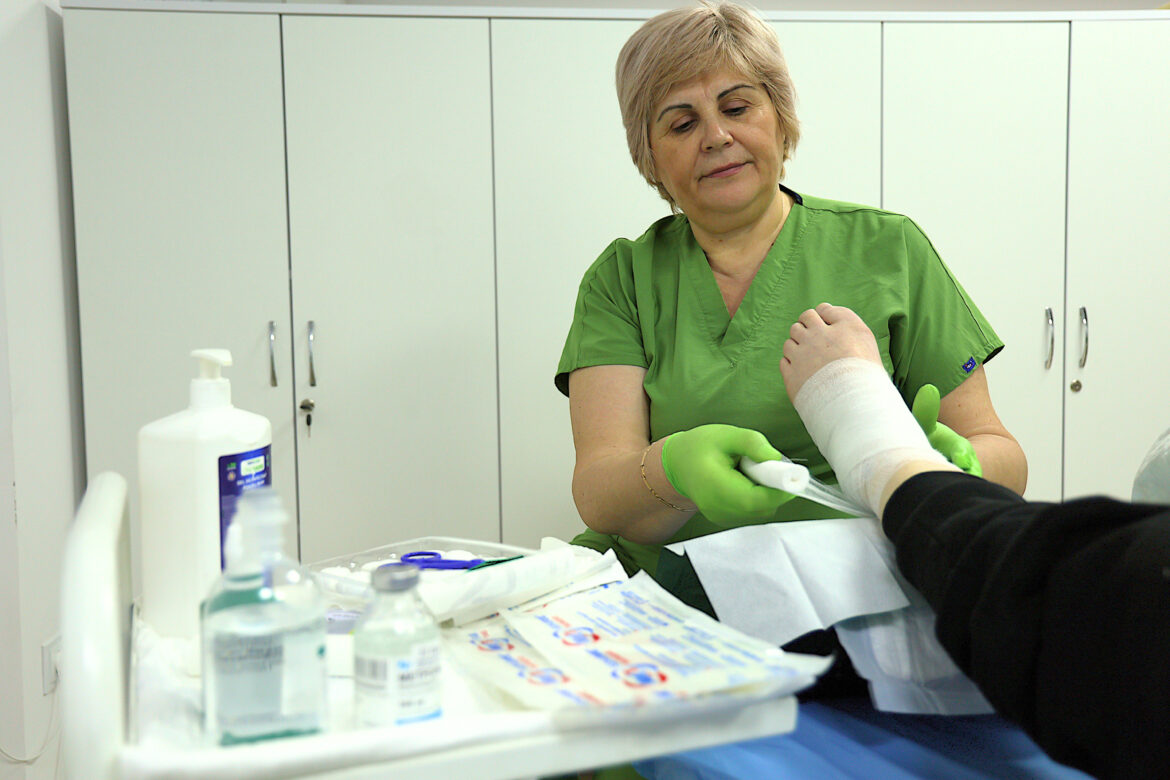
HOW TO PREVENT AND CARE FOR BEDSORES: TIPS FOR CAREGIVERS
| 30.01.2025Bedsores are a major health issue, especially for elderly or immobile individuals, affecting approximately 700,000 people annually. These injuries can have serious consequences, particularly if not properly treated. Prevention and proper care of bedsores are essential to avoid severe complications and to improve the quality of life for patients.
What are Bedsores?
Bedsores are wounds that occur when a part of the body is subjected to constant pressure for a long time, usually on a hard surface like a bed or chair. This pressure reduces blood circulation, which leads to the breakdown of the skin and underlying tissues.
Causes of Bedsores
Several factors contribute to the formation of bedsores by affecting the skin’s integrity and blood circulation:
- Pressure: When a person stays in a fixed position for a long time, pressure on the skin and underlying tissues blocks blood flow.
- Friction: Repeated movement of the skin against a hard surface, like a mattress or chair, can cause irritation and damage to the skin.
- Shearing: This occurs when the skin moves in a different direction than the underlying tissues, often during repositioning of the patient.
- Moisture: Wet skin from sweat or unchanging diapers can contribute to damage to the skin’s protective layer.
- Malnutrition: Deficiencies in vitamins, minerals, and proteins affect the skin’s structure and resistance, making it more prone to damage.
- Age: As we age, the skin becomes thinner and more vulnerable to injury.
- Chronic Illnesses: Diabetes, cardiovascular diseases, and other medical conditions can affect blood circulation, increasing the risk of developing bedsores.
How to Recognize Bedsores?
Bedsores are classified into four stages, each with specific symptoms and treatment needs:
- Stage 1: The skin becomes red, sensitive, and painful, but there is no open wound. This is a sign of superficial irritation. It’s the best time to intervene to prevent worsening.
- Stage 2: A small wound or blister forms, which may look like a scrape or small ulcer. It affects the epidermis and dermis (the top layers of skin).
- Stage 3: The injury reaches the subcutaneous tissue, and the wound becomes deeper, forming cavities. Skin and underlying tissues are significantly affected.
- Stage 4: The wound is deep and involves muscles, bones, or tendons. This is a serious injury that can lead to severe infections like osteomyelitis and requires immediate surgical intervention.
Algorithm for Bedsores Care:
Stage I (Superficial Irritation):
Clean the affected area:
- Wash your hands with water and soap before touching the wound.
- Use saline solution (NaCl 0.9%) or neutral soap and water to clean the area. Avoid using harsh or irritating solutions.
Apply protective cream: After cleaning, apply a moisturizing or protective cream like Bepanthen or Sudocrem to keep the skin soft and hydrated.
Keep the area dry: Ensure the affected area remains clean and dry to prevent moisture buildup from sweat or diapers.
Reposition the patient: Frequently reposition the patient (every 1-2 hours) to reduce pressure on the same area.
Stage II (Minor Ulcer or Blister):
Clean and treat the wound:
- Clean the wound with saline solution and Betadine (10%) using sterile pads.
- Apply a compress with Metrogyl solution for 10 minutes to fight infections and use an adhesive dressing with Levomycetin or Chloromycetin ointment to protect the wound.
Keep the area clean and dry: Continue to reposition the patient frequently and keep the affected area clean and dry.
Nutritional support: A diet rich in proteins, vitamins, and minerals is essential to support the healing process.
Stage III (Deep Injury):
Clean and protect the wound:
- Clean the wound with saline solution and Betadine (10%) using sterile pads.
- Use 3% hydrogen peroxide to clean the wound (for 2-3 days, only if infected).
- Apply a Hydrocoll dressing, which creates a moist environment for healing. The hydrocolloid turns into gel when it contacts the wound’s exudate, forming a moist environment that stimulates granulation and epithelialization.
Monitor progress: Check the wound daily and frequently reposition the patient to avoid continuous pressure on the same area.
Stage IV (Severe Injury with Deep Tissue Involvement):
Medical treatment: The wound is very severe and may involve bones and muscles. Immediate surgical consultation is required.
Prevent infections through strict hygiene and rapid medical intervention.
Prevention Measures
- Mobilize the Patient: High-risk individuals should be mobilized or repositioned every 1-2 hours. Ensure the bed is smooth and free of wrinkles and move the patient properly without dragging or pulling.
- Use Anti-Bedsores Devices: Use special mattresses and cushions that evenly distribute pressure on the body. Avoid using inflatable cushions as they can create additional pressure on the skin.
- Maintain Hygiene: Change diapers frequently, keep the skin dry and clean to prevent irritation and infections.
Prepared by Ala Briză, physiotherapist, senior nurse
_________
CASMED Association, with 14 years of experience in caring for immobilized patients, provides specialized home healthcare services, including the prevention and treatment of bedsores. Our dedicated and well-trained team ensures that patients receive personalized care, which includes monitoring their health status, administering appropriate treatments, and implementing preventive measures. Our goal is to provide a safe and comfortable environment for patients, protecting their dignity and supporting their recovery process.


 Română
Română Русский
Русский

